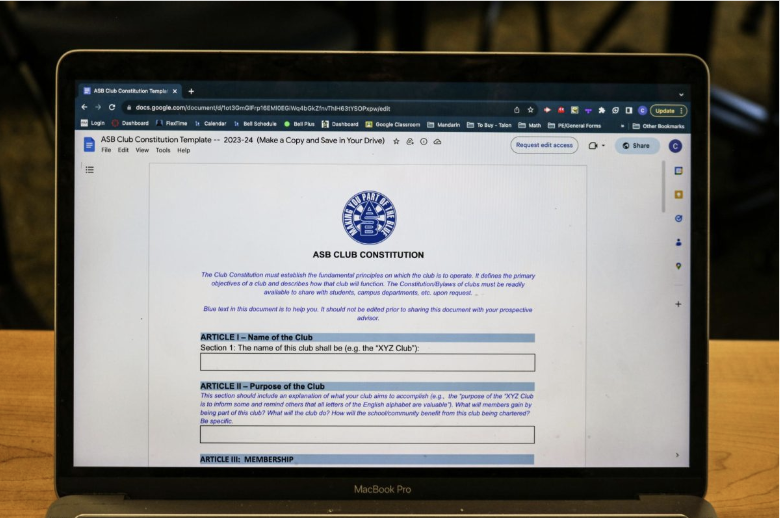Since the Grades/Evaluation of Student Achievement Policy was passed in April, the department coordinators have been working to align their courses.
Foreign Language
The Foreign Language Department has mostly completed alignment. With the exception of Latin, which does not have oral presentation grades, course information sheets are the same, meaning the percentages and weight are the same for all language classes.
“We are extremely aligned concerning the weight of the assignments and the various categories of assessment,” Foreign Language Department Coordinator Robyn Hughes said.
The main focus of this year is calibration, making sure that every test is graded in the same way.
“[Having the same tests] doesn’t matter if in one class [the questions] are worth two points and there’s no partial credit and in another class they’re worth one point and there is partial credit,” Hughes said.
In order to do this, teachers will be grading each others tests, quizzes and oral presentations to determine if their grading is aligned.
“We will be observing each other second semester,” Hughes said. “So, for example, I will go to [Spanish teacher Kim]Hanley’s class and grade her oral presentations and she’ll come to mine. We’re then going to compare notes and align our grading in that way.”
Social Studies
The Social Studies Department has been working on aligning the non-AP classes first.
According to Social Studies Department Coordinator DeeDee Pearce, World Studies, United States History and Contemporary World Issues (CWI) are the most aligned history courses. However, every class has the same course information sheets.
A few courses use the same 25 questions on their final exams. The rest of the questions are chosen by each teacher from a question bank.
Although the teachers are attending weekly course meetings, the focus isn’t always on alignment. Because of the time constraints, Pearce thinks that it will be some time before complete alignment is reached.
“It is a work in progress,” Pearce said. “Right now we’re taking little steps at a time, every year we do a bit more. So right now the course information sheets, the common questions on the assessments and then we go onto the next thing, whatever that is.”
With the exception of World Studies, CWI and US History, classes haven’t yet begun aligning unit exams and projects.
Mathematics
The Math Department is aligning courses in terms of content, rigor and common core standards.
The department is implementing new strategies and common core standards this year that emphasize the understanding and application of math rather than simple memorization.
“We are trying to implement more practice on Reading Apprenticeship strategies to help students read better from math text/word problems,” Math Department Coordinator Betty Yamasaki said.
For assessments, the Math Department has common finals in every course and is also using common unit tests, differing slightly to prevent cheating.
“Due to the security of the test, there are times where we cannot give the same identical test,” Yamasaki said. “Factors such as when the teacher needs to spend more time on a concept, or when a teacher is absent, can end up [causing] different test days.”
English
The English Department is relatively far along in complying with the district board policy because the department began the process of alignment a number of years ago. Over the past several years, the English Department has come to a consensus on almost all the ways they assess work. Grading scales and assessment methods are already aligned.
“In terms of our assessment practices, we decided that we wanted to come to a collective agreement within the department,” English Department Coordinator Keren Robertson said. “We all agreed to have certain category weights for our college prep classes, certain category weights for our non-senior college prep classes and certain category weights for our AP courses.”
Robertson said this year the discussions were easier because they were already on the path to alignment and had reached their decisions beforehand.
“In the past some of the conversations that were really challenging were grading philosophies,” Robertson said. “Like ‘what does it mean to get an A or a B or a C in an English class,’ what should be graded, what shouldn’t. There were really good conversations.”
Science
The Science Department had been aligning itself before the board policy.
“In general it’s been the case all along that the course teams have been pretty similar, but this year we had to document it on our Course Information Sheets,” Science Department Coordinator Greg Stoehr said.
All science courses have the same percentages on the Course Information Sheets and have the same grading policy.
“We have always looked at our semester grades and we see if they are pretty similar between teachers and courses, and the percentages seem to be very similar,” Stoehr said.
Due to science teachers only being able to teach what they have credentials in, there is only one teacher for each AP and honors course.
“In these cases we are aligning…that course [to] the AP test, not to another teacher,” Stoehr said.








